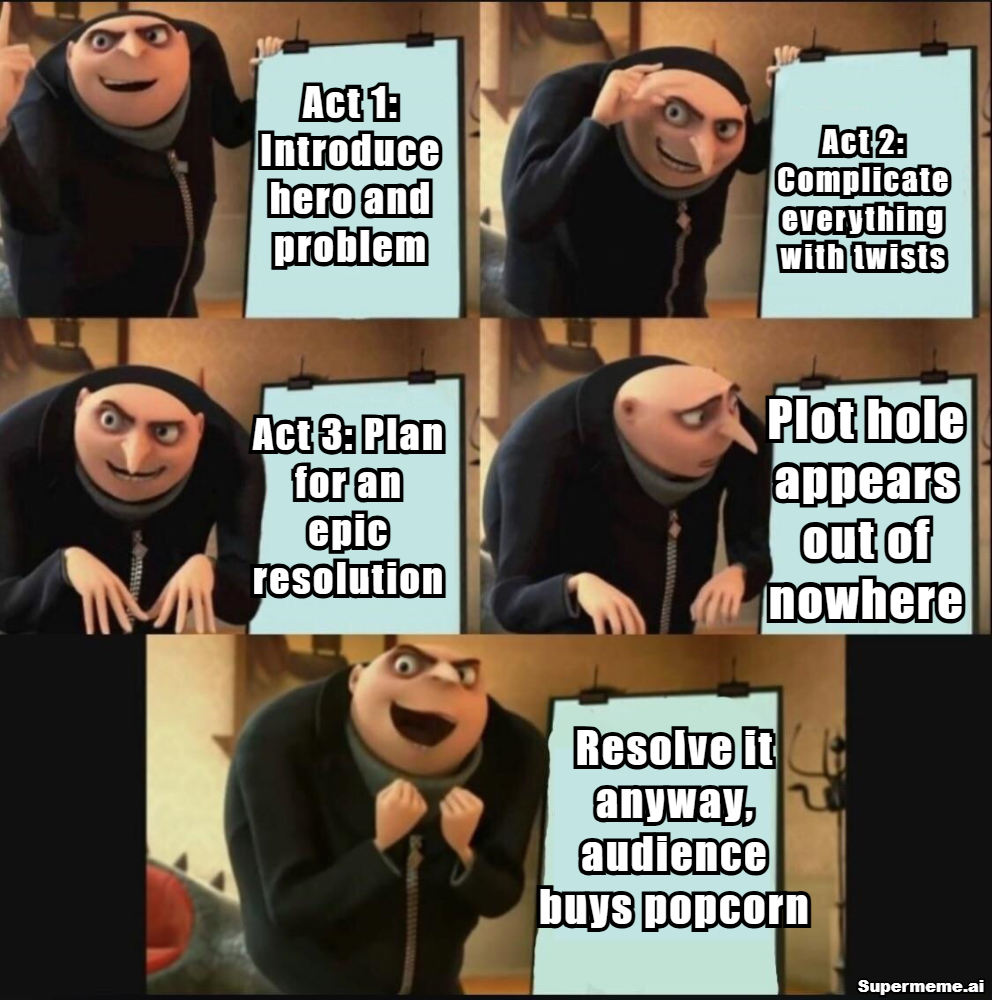
Coming up with a good plot for your story is one of the most essential things you can do for your book. Of course there’s other things too, like developing a good character, world building, and so on, but without plot, your book or film is dead on arrival.
Coming up with a good story plot however doesn’t happen easily. Some plots are also going to be more suited for certain genres, some for long form stories, some for short.
Then there’s also the debate over whether or not you should follow a specific structure or outline that is based off of someone’s “proven” method. Others will say that if you’re following any story structure at all, then you’re not being true to yourself as an artist.
I have some real thoughts here, and I’ll share those with you today, I’ll be mostly talking with you about the structure aspect of plot.
How Important Are The Guru’s Story Structures?
If you haven’t heard of them yet, you doubtless will as you progress, but there are many guru’s out there who will tell you how to structure your story. From Blake Snyder’s “Save The Cat” to Joseph Campbell’s “The Hero’s Journey,” and several others between and around, you’ll find definitive methods for what to say on which page of your book or screenplay.
You’ve also heard of the 3 act story structure, the wheel, and possibly others. Who is right?
Can’t you just start writing your book, pantsing your way through until you come to the end of the story?
Here’s the thing, experimental story structure is ok, if you want to experiment. If you want to make money on your stories, adhering to a proven structure, even if loosely is going to be important.
Human’s are story loving creatures. We’ve been conditioned over thousands of years to respond to stories. If your story doesn’t receive the sort of response you think it deserves, then maybe your structure is too outside the norm for most people to relate with.
For this reason, I believe that following proven methods are important. I don’t think a strict and rigid adherence is completely necessary, but a story should have a beginning, middle, and end. But every form of art should tell some story.
How would you apply the Hero’s journey to a painting? Or Save The Cat to a sitcom, song, or novel? What about short stories? There is not single approach that hits all of these different story forms. But understanding that your plot still needs a recognizable format is still essential if you are to find any impact with your audience. At least its important if you want to make any money with your art.

How to Structure Your Plot
Have you ever heard the saying, “Only once you’ve learned the rules, can you break them.”
This is how structure works. When I’m plotting a book, I’ll find a structure that suits the format of my story. I’ll then lay out the essential beats of that story in a way that best tells the story in the genre that I’m going for.
By the way, if you’re like me, and you hear the term “Beats” and it confuses you, I get it. It took me a long time before I understood what that meant. I’ll discuss that in my next article, so check back next week for more on that, but for now, we’ll stick with structure.
Once I have my book outlined, with the structure that makes the most sense, I’ll start writing. One thing I’ve learned though, is that even if you have what seems like a perfect structure, by the time you finish your rough draft, it doesn’t always feel right, yet.
That is because my original plot either had holes in it, or as I was writing, my imagination took me in a few different directions that either helped or hurt the story, but now need to be reconciled in the greater whole.
This happens whether you are plotting your way through a story or pantsing your way through it. If you haven’t realized by now, I tend to work more on my plot before I write, rather than just taking an idea and writing by the seat of my pants (pantsing).
So my ugly rough draft is done, and this is where I take my rough draft and turn it into my first good draft. I’ll read through it, outline what is happening in the book, and making judgments based on what I know of story structure, plots, and beats, to make a story that works.
I think of it like this. My rough draft is like going to the quarry and chiseling out a large block of stone.
My next draft, is where I take that stone, roughly the right dimensions, and I chisel out the majority of waste till I have a very rough shape of my statue.
From there, future drafts will be honing the statue into its most pure form, but I have to get the thing looking roughly like it should first.
Then once you’ve got the shape of your story, you are ready to add color and edit it. A note on breaking the rules. This can be a fun way to subvert expectations, and give the reader something unpredictable. Be careful though. This isn’t something that you should do, willy-nilly. Especially as a beginner, you need to know how breaking those rules might affect your audience.
Often transcending any given story structure is less about being experimental, than it is about adding layers of depth to your story.
Where To Start Learning About Structure

If you’re a beginning writer, keep it simple. The 3-act story structure is the most proven out there. Frankly, a lot of other story structures, if inspected, are still 3-act structures. Base your plot on the following:
Act 1: Beginning. You learn about your character
You have some sort of inciting incident
You have some way of breaking into act 2
Act 2: Fun and Games. Your character hits multiple obstacles, each leading up to
Act 2: Midpoint. This is some kind of twist. Followed by more obstacles.
At the end of Act 2, you find some sort of climax
Act 3: You work through your climax, but don’t solve it yet. You need to enter that “Dark night of the soul, when things are at their worst.
Then you can find a way to overcome all, and wrap up your story.
Act 1 should last about ¼ of your story. Act 2 should be a good ½ of your story. Act 3 should last about the last ¼ of your story.
Another type of story structure you could look into are circle stories, where the story ends where it began. Let me know if you have any other structures you like to tell stories in.
Regardless of your genre, this will get you started. The next thing to learn will be genre beats. Entire books have been written on this topic, and many people confuse structure with beats. So in a future article, I’ll point you in the right direction, but if you’ve gotten this far, good job. Learning to tell your story based off proven methods isn’t discounting yourself as an artist. Even an oil painter needs to know their technique before they can create art. They might add their own flare eventually, but technique is still a part of any art form, including story structure and plot.
To find more, visit my YouTube channel on this topic at: https://youtu.be/UBL8fyOwqW8

Leave a Reply